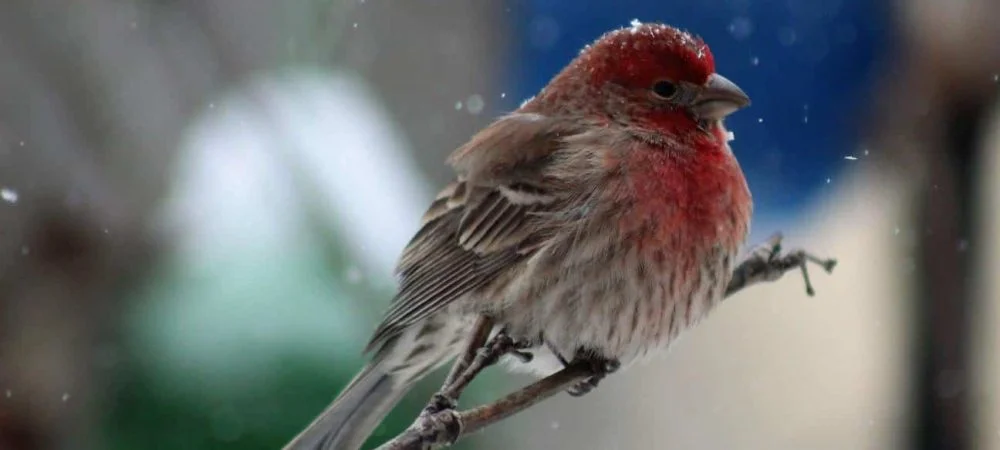
Want to learn more? This book on everything to do with Finches is a fantastic read!
The west coast of the U.S. holds some of the most scenic and idealistic natural landscapes in the country.
Outside its nearly year-round sunshine, California’s immense area is filled with a diverse gathering of tall trees, with plenty of sun and Pacific climate to create nature’s apiaries.
The finch is one of its inhabitants, unsurprisingly, as this diminutive bird loves the green backyards and bird feeder buffest Californians keep outside. Below, we list the finches that call the Golden State home.
Want to attract finches? Take a look at our article!
What Finches can be seen in California?
Table of Contents
1. Purple Finch
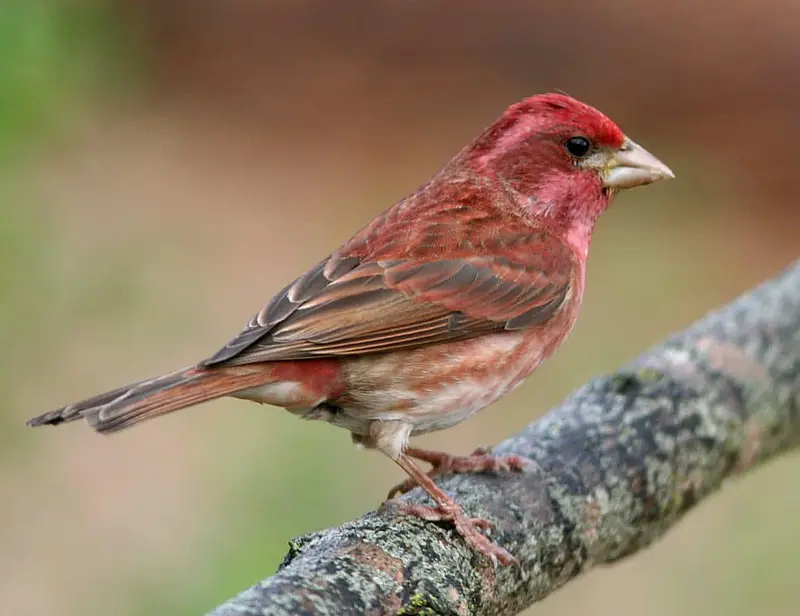
Peter Ward and Ken Hall, XC598463. Accessible at www.xeno-canto.org/598463.
Fun Facts:
- These birds have bills that are designed for breaking different seeds open. Their favourite seeds include black oil sunflower seeds and safflower seeds. They also enjoy eating nectar and occasionally consume flower buds.
- Purple Finches weigh just slightly more than House Finches at 18-32g. They also have very small wingspans which range from 22-26cm.
Outside of the dry areas close to the Mexican border, purple finches thrive throughout California.
These birds were probably named before the color ‘hot pink’ was invented, because the males are closer to that than purple.
The rest of the male is a dark brown with white streaks throughout, blending into whites, grays, and purples on the stomach.
Females are even browns with hite stomachs and white specks throughout. Like most of the state’s finches, these are backyard ‘pets’ who like to gather near bird feeders, baths, and in the sporadic groups of trees in residential neighborhoods.
Purple finches follow the conifers and their seeds, so these are ideal bait ideas to lure them, as well as a clue where they can be spotted.
They typically overwinter in sunny California, like many small songbirds, though they may migrate from the north to central part of the state.
2. Pine Siskin
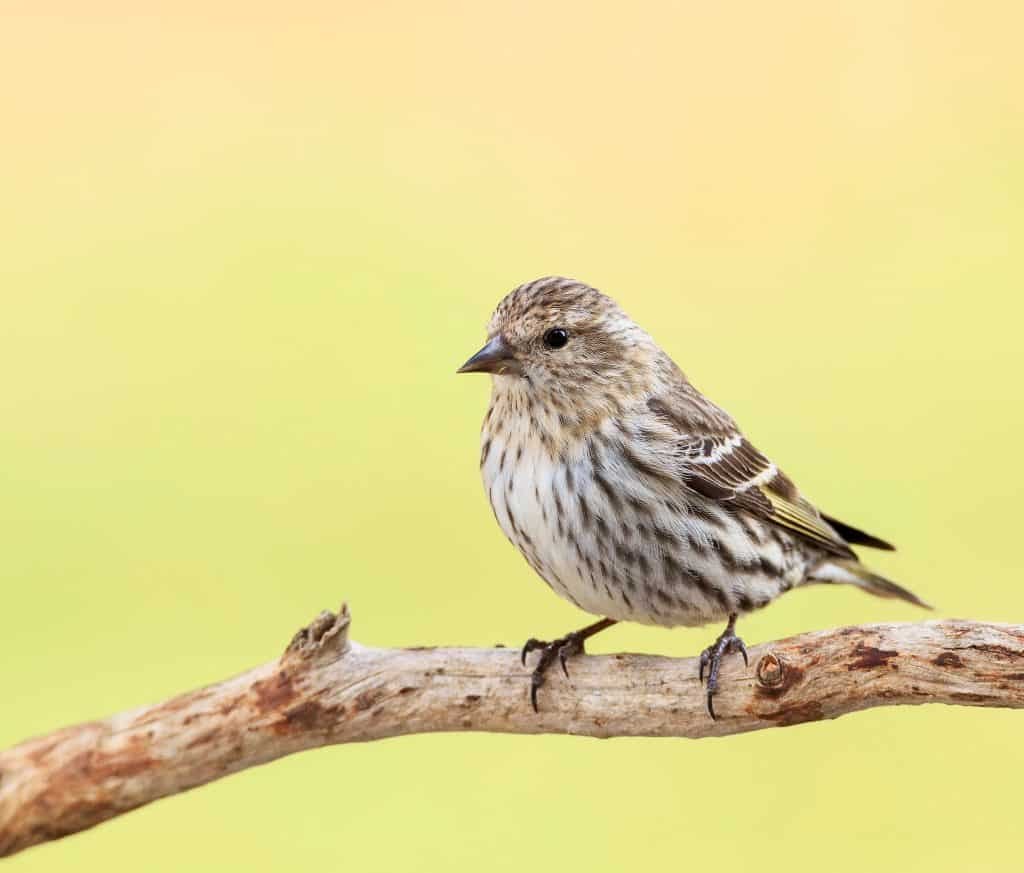
William Whitehead, XC595659. Accessible at www.xeno-canto.org/595659.
Fun Facts:
- These birds have beaks designed for eating seeds and, as the name suggests, they mostly eat seeds from the pine family. As well as seeds, they have also been known to forage for small insects, these insects are usually aphids.
- Pine Siskins are very similar in size to the American Goldfinch, weighing in at a range of 12-18g. Like other finches, they also have small wingspans of 18-22cm.
This bird’s name clues us as to where they like to hang out in California. While siskins breed in the far north in Canada and Alaska, they will come south for the winter and settle in sunny climes the rest of the year.
Like many, these finches are found in the piny mountains of northern California year-round, and they aren’t shy about approaching feeders stocked with seeds and berries.
They are nomads, however, so there is a chance there will be a scarcity one winter after several in a row with plenty of them.
You can spot them at the edges of fir tree limbs looking for food, rarely on the ground rummaging like their cousins.
Adult males have brilliant golden feathers mixed in with the black of their wings and white stomachs with black faces; females are essentially the same color, except their bodies have dark streaks across the belly and face with less gold in the wings.
3. Grey-Crowned Finch
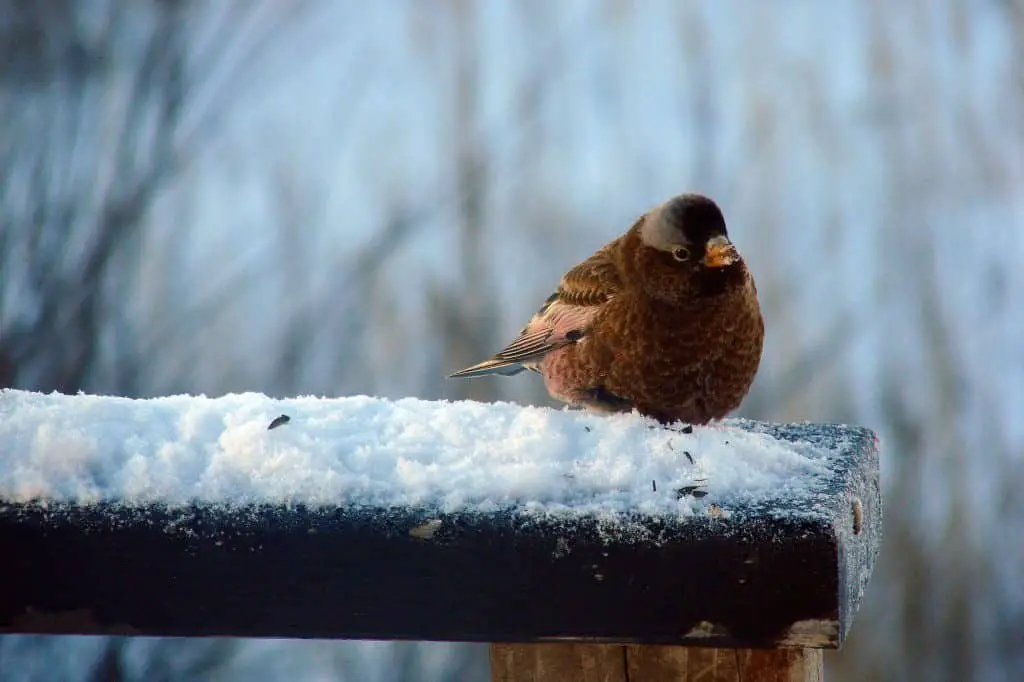
Andrew Spencer, XC143945. Accessible at www.xeno-canto.org/143945.
Fun Facts:
- These birds will primarily eat seeds but have also been known to eat insects throughout the summer.
- These finches are slightly larger than others, they can weigh from 20-60g.
These are often sighted at the northeastern tip of California near Nevada’s northwestern border.
They reside mostly as visitors flying south for the winter from Canada and the US northernmost states, but there is a consistent breeding population in eastern California.
They like to build nests in rocky places where natural outcroppings and boulders shield them from predators and the elements, usually at high elevation like Cassian’s.
Physically, the finch bears the silver-grey feathers that provide its name, with a body that is almost completely brown save for a few black feathers at the wing tips and some pinkish feathers near the base of its body.
There may be some dark coloring around the eyes in females, who have more pink feathers on the belly than just the base.
They are ground foragers, more equipped for the wild than bird feeders, but relatively secluded homes in California’s northern mountains will find plenty of opportunities to spot them.
4. Cassin’s Finch
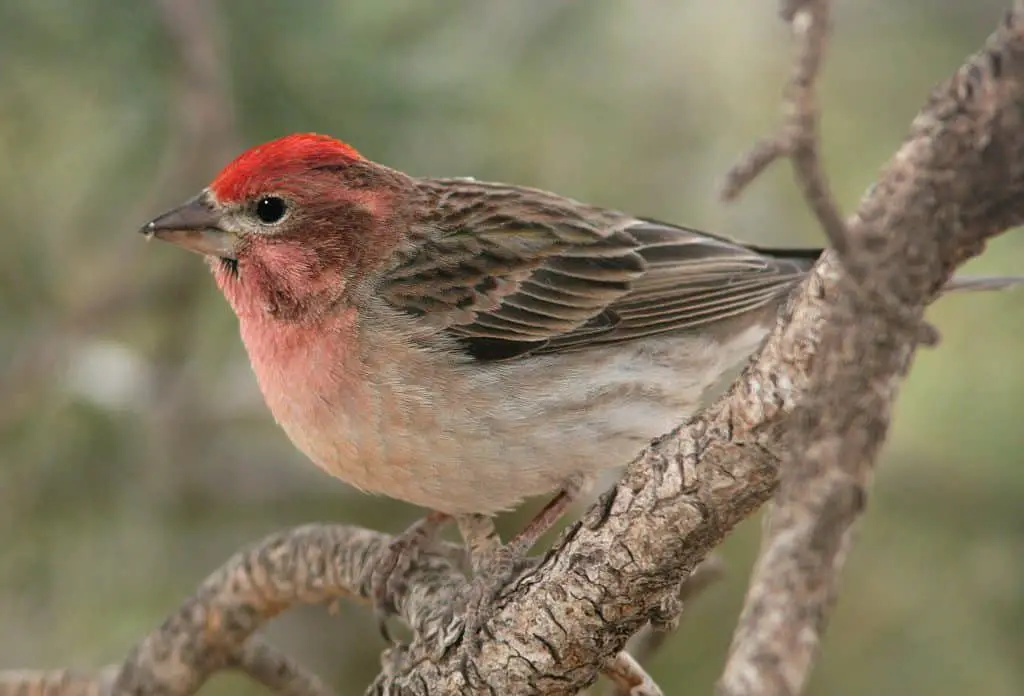
Richard E. Webster, XC621695. Accessible at www.xeno-canto.org/621695.
Fun Facts:
- These birds primarily feed on seeds, however they do eat insects when they are available.
- These finches are slightly larger than the others, weighing in at 24-34g.
These mountain finches are common in the northeastern tip of California like Mt. Shasta, where the elevation is high and the fir trees are plentiful.
In terms of feeding, Cassins are mostly vegetarian, snacking on seeds and berries, but they will take insects back to the nest when they’re available.
They closely resemble the purple finch, where males have rose-colored heads feathered into a mohawk, white stomachs, and brow bodies that blend into various colors where the feathers meet.
Females are an even mix of white and light brown in varied patterns.
Cassin’s finches are known for two prevalent habits: a song that sounds part their own and partly copied for other birds (so they often sound like a multitude of birds singing at once); and their tendency to form communities where multiple nests are near one another like their own neighborhoods.
5. Red Crossbill
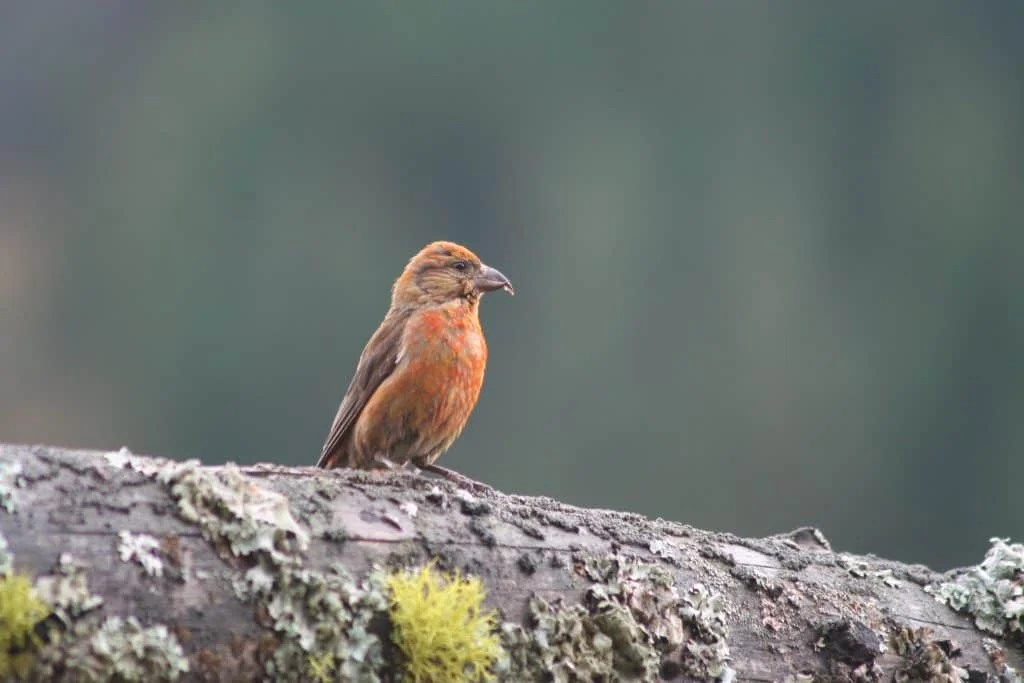
Stanislas Wroza, XC626649. Accessible at www.xeno-canto.org/626649.
Fun Facts:
- The Red Crossbills mostly feed on seeds, particularly pine seeds. During the summer they will also sometimes eat insects.
- Due to their varied and unstudied sizes, there is no average weight range for this bird.
These heavyset finches inhabit California’s northern border and surrounding areas all year-round, living in the coniferous forests of the mountains with their cousins the Cassin’s finch and grey-crowned rosy finch.
Many spread to the central part of the state near the Nevada border throughout the year, but they are generally non-breeding winter tourists elsewhere.
They nest in all types of trees, from conifers to deciduous to ground-laid shrubbery, and they forage among backyards when treats are made available.
Red crossbills are unsurprisingly red throughout their bodies, with bright red bodies and dark red wings. The females look more like goldfinches with their lemon-yellow bodies, though their colors are a bit more dull.
Their trademark comes from the tips of their beaks (or, bills) which cross one another like a tropical bird rather than landing flush like a typical songbird.
6. Lesser Goldfinch
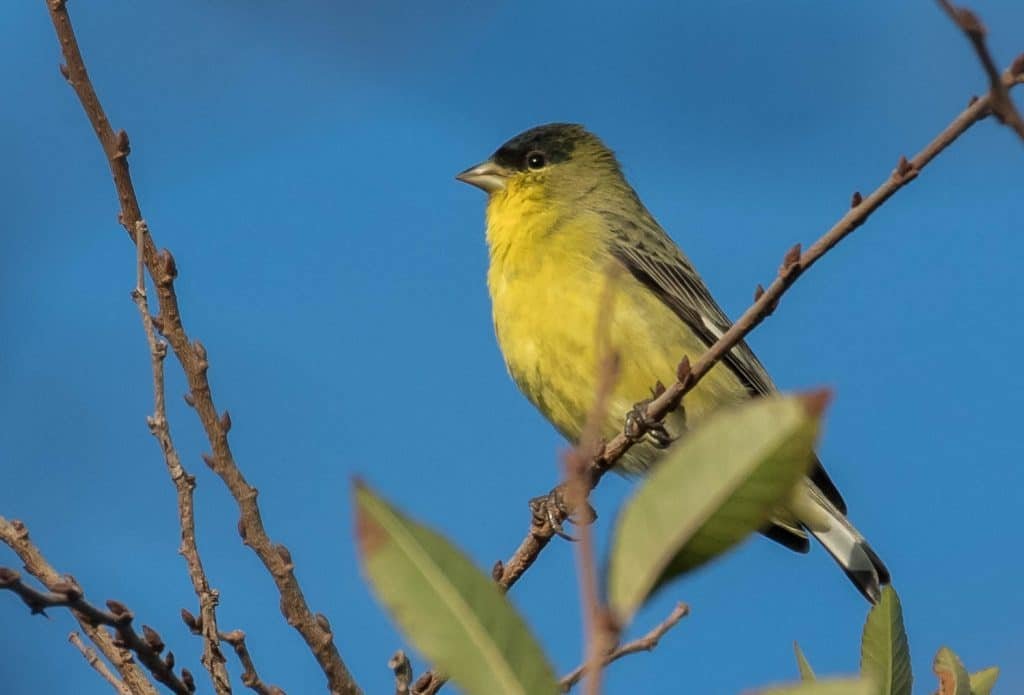
Paul Marvin, XC549158. Accessible at www.xeno-canto.org/549158.
Fun Facts:
- These finches mostly eat seeds however they will also consume fruit from time to time, such as elderberries. In summer they will also eat certain types of flowers.
- These finches are the smallest of the species that we have previously looked at, they weigh only 8-11.5g with a wingspan of 15-20cm.
The Cassian’s cousin likes to perform cover songs like his kin, though lesser goldfinches spread through much more of California.
They can be considered the rare ‘desert bird’ among the finch family, equally comfortable in high elevation as they are in the dry lowlands of Southern California leading into Mexico.
Lesser goldfinches can be identified easily by their bright yellow plumes contrasted sharply against a black crown and cape.
The ratio of these colors may vary from bird to bird (some have more black than yellow, and vice versa), but they are always in the same general area.
They can be lured to feeders throughout California with seeds from sunflowers, dandelions, and thistle, as well as small berries.

More Articles.
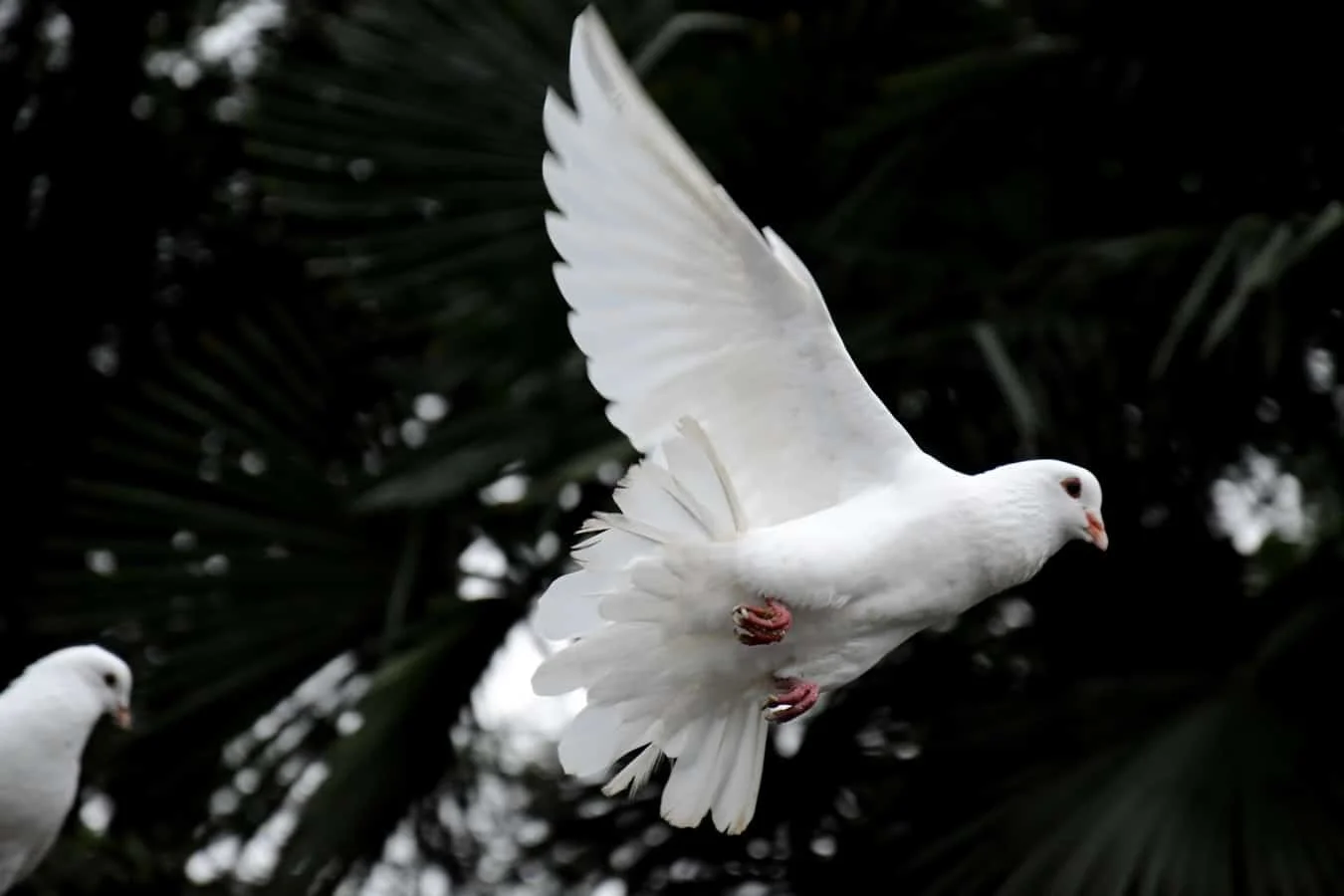
How to Attract Doves to your Yard?
Doves are beautiful birds with many sentimental attachments. Most people affiliate doves with positivity, love,
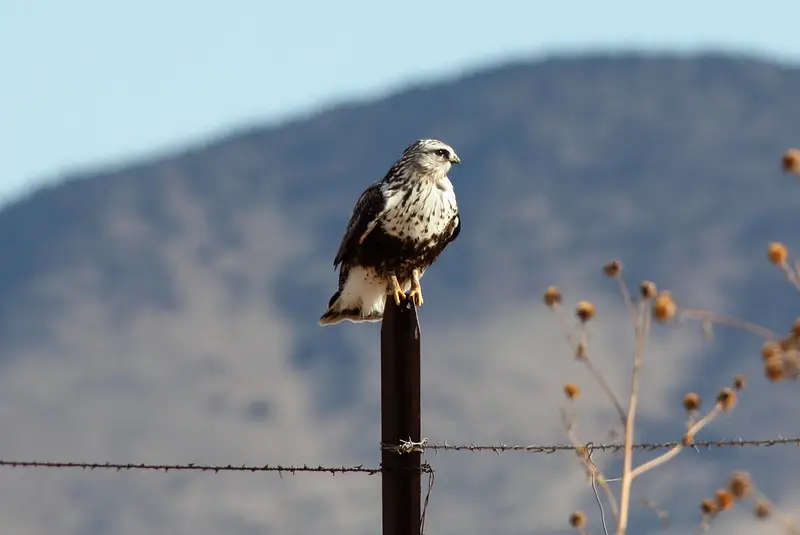
What Hawks can you see in France? (3 Species with Pictures & Sounds)
What Hawks can you see in France? There are 3 different species of Hawks that
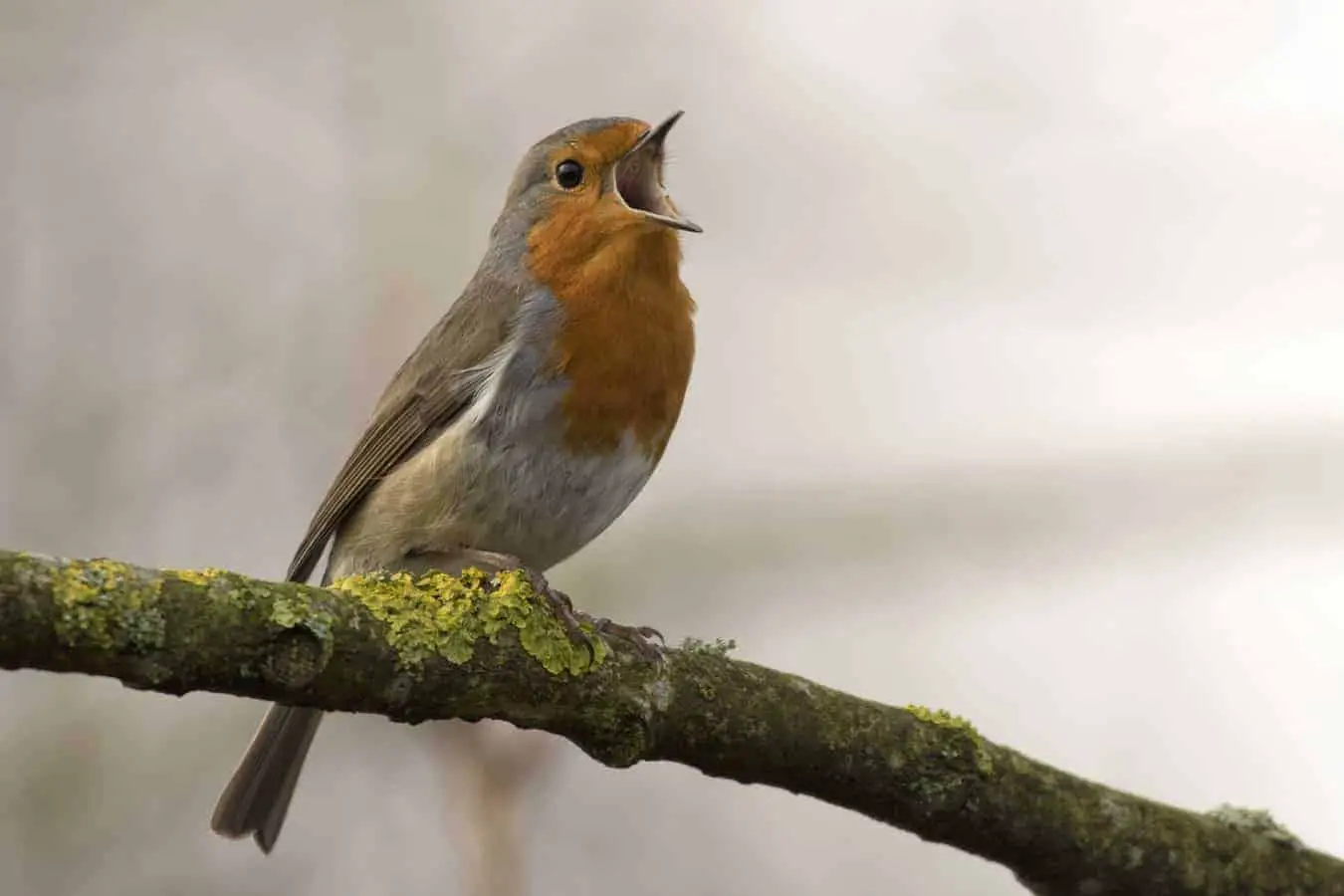
How to Attract Robins to your Yard?
Robins are known for being friendly and energetic birds that love to spend time hanging

About Us
We are avid bird-watchers who recently retired, allowing us more time to travel the world. Fortunately, we have managed to visit numerous countries around Europe, Asia, and America. Watching and photographing birds has been a passion for many years and we are making the most of the extra time on our hands!
